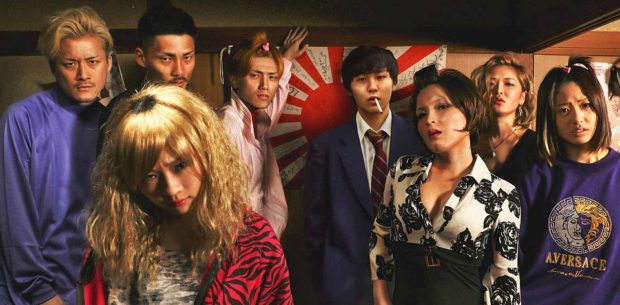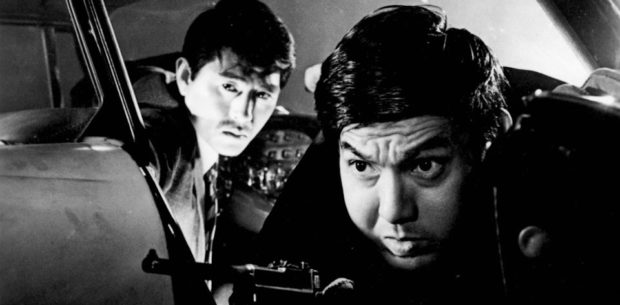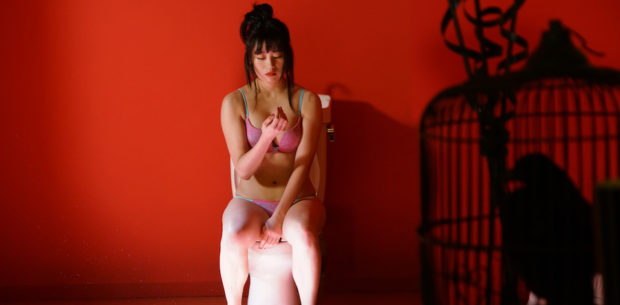The always wonderful Japanese Film Festival Australia has announced its 21st program, so we took the opportunity to chat with Program Coordinator Margarett Cortez about the 2017 line-up.
We spoke with Margarett about this year’s lineup, along with the changes to programming over the last decade, supporting new directions in Japanese cinema, and some of her favourite picks from the almost 40 films that make up the program.
This is the 21st Japanese Film Festival in Australia. You’ve been Program Coordinator for the last few years. What do you think are the major changes in the Festival during this time?
Where do I start? It’s still the same festival. We still offer a diverse set of films. The guiding principal has always been there’s something for everybody, although over the last few years we’ve been working hard on showcasing works from younger or emerging directors as well as more art house films. So while we’re still very keen in presenting mainstream films, mainly because there are still a lot of fans of mainstream Japanese films in Australia, on the flip side we’re also very keen to introduce more independent films, as well as titles that compete in international film festivals.
So what are some of the titles that you think exemplify that current approach to the festival?
I think that titles such as LOVE AND OTHER CULTS, which will be screened in Sydney and Melbourne, I guess some people would see as a bit of a wildcard entry because it’s an indie film. It has an English producer, so not a Japanese producer, but it’s written and directed by a Japanese director, Eiji Uchida. The cast are a combination of veteran actors such as Denden, but also emerging and up and coming actors such as Sairi Itoh, as well as Antony. Other titles, such as SNOW WOMAN by Kiki Sugino, which was in competition at the Tokyo International Film Festival last year. The format of this film is not mainstream at all. It has a non-linear storyline, and the feel of the film, the vibe of the film, is outside a lot of mainstream Japanese ones.
You mentioned a couple of other festivals around the world there, and one of the things I’m always interested in is the changing way we receive films in Australia: more Japanese and other Asian cinema not just at festivals but in suburban cinemas, digital and streaming and so on. Has this impacted the way the Festival is programmed?
Yes, I do think so. In the past, over the past 10 years, there’s been a decrease in the number of anime titles that we’ve been offering, mostly because these are the types of films that we normally have access to outside the film festival. So distributors such as Madman, as well as Hanabee and recently CineAsia, have been offering titles. There’s a really huge Ghibli retrospective going on at the moment, as well as newer titles coming out such as Fireworks, Should We See It from the Side or the Bottom?, and of course the new Studio Ponoc film from the previous Studio Ghibli animators, Mary and the Witch’s Flower. I guess over the last two years, we’ve also started to introducing a bit more in the slasher and the crime genre, because…when we say “Asian films,” a lot of the newer Asian films that get mainstream releases in Australia are Korean crime films. So we’ve been programming a bit more of that as well, but it’s still hit and miss for us. We’ve programmed a few very violent films over the last few years. While a lot of people were very happy with it [laughs], people were also quite unsure.
On that note, is there anything you really wanted to get for the festival but you weren’t able to secure?
Yeah, there is actually one film. It’s a mockumentary. It’s something we haven’t really screened before. It’s called Matsumoto Tribe. Unfortunately that did not make the cut, but I think it’s a great piece of mockumentary. It’s quite powerful, but it’s also very gritty, and I think the type of film that say, 3 out of 5 people will find offensive.
That sounds like exactly the sort of film I want to go and see.
[Laughs] Well, there’s still some of that in this year’s program.
Well, one of those films that will push the boundaries is one you’ve mentioned, LOVE AND OTHER CULTS. Eiji Uchida is visiting as a Festival Guest. He’s an exciting voice in Japanese cinema. Was there a reason he was targeted this year?
With the special guests, we always try to introduce either female directors or sometimes try to add in directors from the more independent genres as well. For this festival in particular, I was working closely with Adam Torel from Third Window Films and the suggestion came up, why don’t we bring Eiji Uchida as well as Sairi Itoh. Unfortunately, they won’t be making it to Sydney, but they will be in Melbourne for a Q&A.
Fantastic. Well, the other major highlight of this year’s festival, both before and after a lot of the major cities, is the Suzuki Seijun retrospective. It’s a really interesting choice, having seen a number of his films in the past. What do you think audiences will discover from this collection of films?
I think the amazing thing is, after watching a Suzuki Seijun film, is that it’s hard to believe that he made these films in the ’60s and in the 50s. Particualry, a lot of the films that we selected for the retrospective are films from the 60s, while he was still with the big studio, Nikkatsu. So we really hope that the audience discover a different kind of Japanese classic film. So we know that [Akira] Kurosawa is really popular, and [Yasujirō] Ozu is really popular, but I don’t think there’s a lot of focus on the other directors, apart from [Kenji] Mizoguchi. Ozu, and Kurosawa. Last year we also tried to do the independent cinema from the 60s and 70s, and I guess this year is a continuation of that with the Suzuki Seijun selection. Also, he passed away this year, so it’s just very timely.
So what are you personally most excited about out of this year’s program?
I honestly like every single film. I’m actually really excited about ANTIPORNO. I’ve always had a love/hate relationship with Sion Sono films, but I think this is the first film where he finally successfully made a real feminist film. A lot of his critics and fans have been saying that for the last few years, and it’s always a bit ‘Really? Is that just marketing?’ But ANTIPORNO is intelligent, it’s subversive, and it’s very in your face, but if you’re up for a challenge I think it’s something that you should definitely see.
If I were to make another suggestion, another of my favourites is SNOW WOMAN. It’s directed by Kiki Sugino, who’s a young, female director, also an actress. So she’s appeared in a lot of independent films, mostly Korean independent films, as well as Japanese independent films. I think it’s just a brilliant way of retelling the same story, but she really made it her own but moreover, made it interesting and relevant.
Of course, New Directions in Japanese Cinema is about supporting new voices, and short films and I understand one of these is by an Australian filmmaker?
Yes. So for the New Directions in Japanese Cinema, which we’re calling the Short Film Collection this year, available only in Sydney and Melbourne for now, it’s two films from the NDJC program and one of the short films is independent of that program. So all films are made by Japan-based directors, and NDJC has been going on for a few years now, and not only is it a way of supporting new voices in Japanese cinema, but they also shoot in 35mm. So it’s kind of turning into a lost art, and I think it’s a brilliant idea to incorporate that into the NDJC program. The third film, Highheels – A Fairy Tale Born of Obsession, is quite different to the other two, but it also represents a rising trend in Japanese filmmaking in that it’s actually a fashion film. It’s made by a Korean filmmaker, Inchul Lee, who moved to Japan when he was a teenager.
We’ve also started to introduce short films as a pre-film bonus film this year. So there’s two of them. One is called Rice Balls by Shingo Usami from SBS Radio Japan, and that one is screening in tandem with TORI GIRL. The other one is the short documentary film made by Yu Sasaki of Sasaki restaurant which is screening before MIDNIGHT DINER 2. So that’s going to be like a foodie’s double special.
So how far out do you start planning for JFF 22?
It’s a bit too early for that. [Laughs] Once the current year’s festival is done, we then start right away receiving screeners or contacting Japanese distributors for screeners. We also look at films that were released, it’s really with the timing, it all boils down to that. So for example, there are a couple of films that will be released this year, but won’t be ready for an international or overseas screening until next year. So we kind of chuck that on our list, wait for next year to come around, and try and review the film to see how well it will do in Australia and how well it will fit the overall programs.
A full list of film can be found japanesefilmfestival.net national tour of Canberra, Adelaide, Brisbane, Perth, Sydney and Melbourne, from October 13th to December 3rd.
- CANBERRA – 13 to 22 October 2017 at Dendy, Canberra Centre
- ADELAIDE – 19 to 22 October 2017 at GU Filmhouse Adelaide
- BRISBANE – 25 to 29 October 2017 at Event Cinemas Brisbane City Myer Centre
- PERTH – 1 to 5 November 2017 at Hoyts Carousel, Cannington
- SYDNEY – 16 to 26 November 2017 at Event Cinemas George Street
- MELBOURNE & CLASSICS – 23 November to 3 December 2017 at Hoyts Melbourne Central & ACMI Cinemas
- CANBERRA CLASSICS – 6 to 7 October 2017 at National Film and Sound Archive
- SYDNEY CLASSICS – 1 to 25 October 2017 at Art Gallery of NSW







